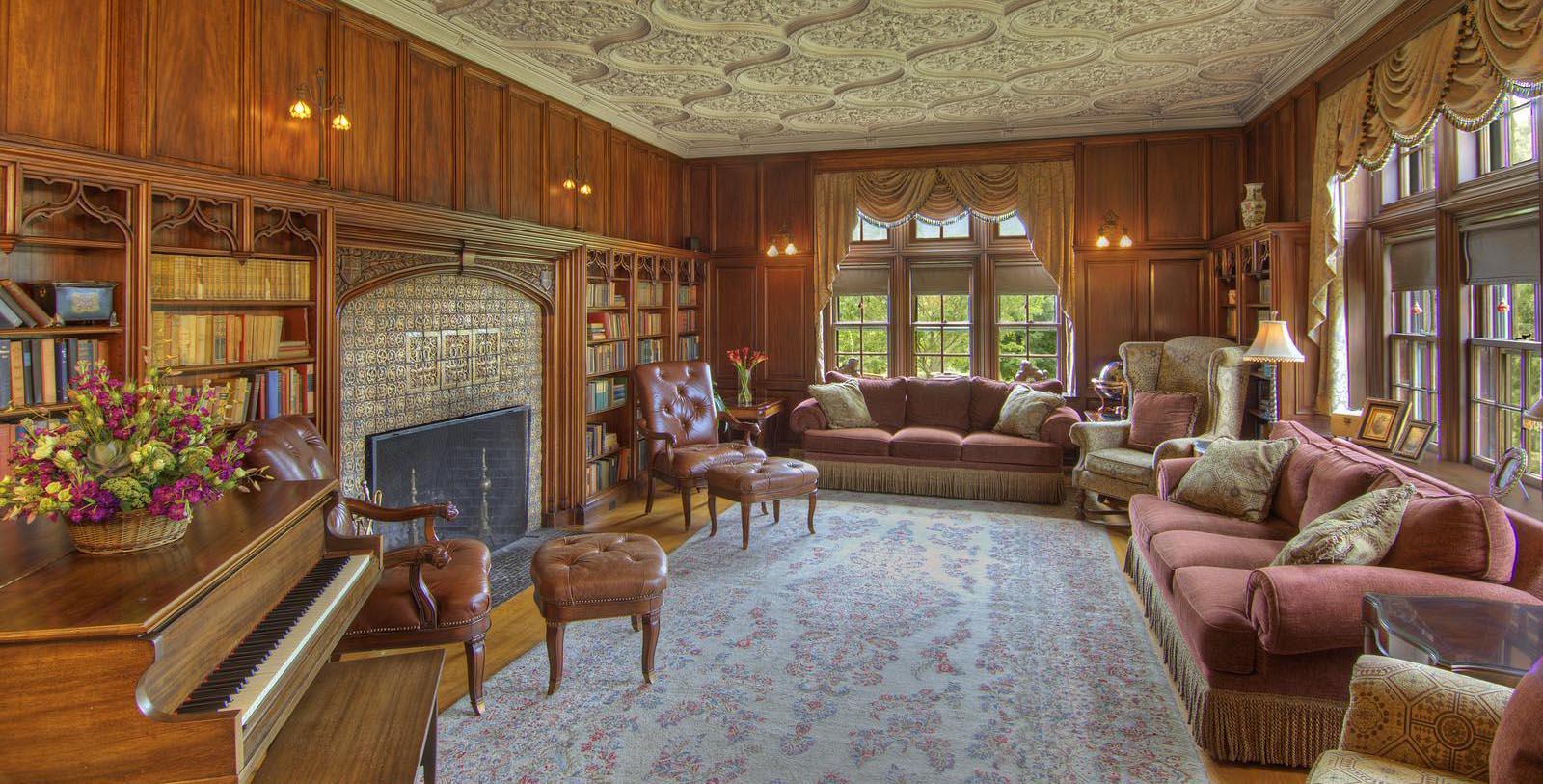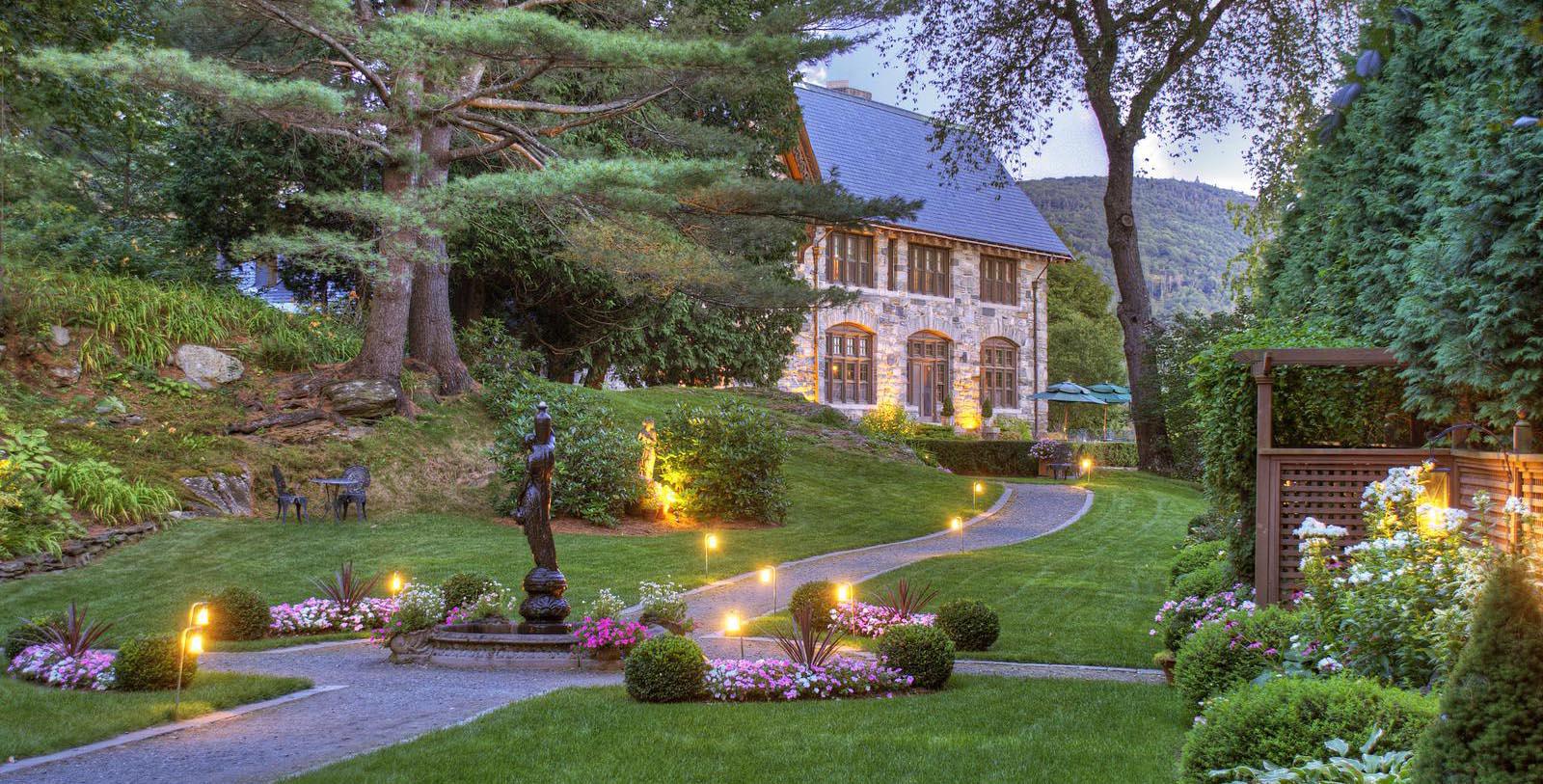Receive for Free - Discover & Explore eNewsletter monthly with advance notice of special offers, packages, and insider savings from 10% - 30% off Best Available Rates at selected hotels.
history
Discover Castle Hill Resort and Spa, which was the vison of Allen Miller Fletcher, who served as Vermont’s Governor from 1912 to 1915.
Castle Hill Resort and Spa, a member of Historic Hotels of America since 2007, dates back to 1905.
VIEW TIMELINEA member of Historic Hotels of America since 2007, the Castle Hill Resort and Spa is one of Vermont’s most exclusive vacation retreats. This fantastic historic destination has been a cherished local Vermont landmark for more than a century, celebrated by locals and visitors alike. Its history is incredibly rich, as it can directly link its heritage to one of Vermont’s most noteworthy citizens, Allen Miller Fletcher. Originally a native of Indiana, Fletcher spent his formative years in Easthampton, Massachusetts, where he received an education at the Willston Seminary in the middle of the 1800s. He subsequently traveled the world as a businessperson upon graduating, working in such far-off places like South America and Europe. Fletcher obtained a small fortune, using it to construct a quaint summer cottage in his family’s ancestral home of Cavendish, Vermont (specifically the village of Proctorsville). Not one to rest on his laurels, he decided to try his luck in the New York Stock Exchange a decade later. Moving to New York City, it only took Fletcher some six years before he had acquired enough wealth to retire to his beloved Vermont. Fletcher had already considered relocating to the state for some time, having immersed himself more closely with the culture of Cavendish. In fact, he had served as a Proctorsville Village Trustee, which ingratiated him greatly with the local community. This popularity even won him the Republican nomination to serve in both the Vermont House of Representatives and the Vermont Senate in the early 1900s. He eventually served in each chamber, working as a representative briefly from 1902 to 1903, before becoming a state senator for another two years.
During his time as a Vermont state senator, Fletcher decided to build for himself and his family a new residence just a few miles down the road near the Black River. To create his brilliant mansion, he commissioned architect S.F. Page of the Boston-based firm, Fehmer and Page, to bring his vision to life. Page used English Cotswold-style architecture for his inspiration, using the most advanced technology of the time to aid in its construction. The home was soon the first in Vermont to be fully wired for electricity and equipped with an elevator. Nickel plated faucets were installed on each floor, in order to accommodate a hose in the event of fire. The primary construction material to build the structure was gneiss stone (which was quarried on-site), as well as California redwood. Starting in 1905, European craftsmen worked for five years to create the elaborate detailing that exuded elegance and charm. Fletcher even managed to hire the great Fredrick Law Olmstead Jr. to design the grounds of his spectacular new mansion. When construction on both the building and its attending gardens finally ended, it stood as one of the finest destinations in all of Cavendish. Fletcher would spend the rest of his life at his magnificent mansion, going on to work as the Governor of Vermont from 1912 to 1915 (He gained an extra year when the state legislature amended the Vermont Constitution to change the start date for all statewide government offices.) Today, Fletcher’s beautiful mansion now lives as a magnificent holiday retreat known as the “Castle Hill Resort & Spa,” which attracts hundreds of visitors each year.
-
About the Location +
The Castle Hill Resort and Spa has faced the beautifully verdant Green Mountains for well over 100 years. It sits within the quaint New England township of Cavendish, which American colonists first settled right before the start of the American Revolution. Despite its chartering at the beginning of the decade, the first actual settler to arrive in the township was Captain John Coffeen in 1769. Along with his wife, Susanna, and their children, Coffeen had taken the arduous journey through the Green Mountains from the neighboring colony of New Hampshire. The Coffeens specifically traveled along the historic Crown Point Road, which British General Jeffrey Amherst had first created as a means of transporting men and material into New York during the French and Indian War. Migration to the region remained fairly slow thereafter, with only some five families living in the area during the late 1770s. But that number increased exponentially following American independence, as nearly 500 people had come to call the locale their home. Among the settlers to arrive at the time was Salmon Dutton, who managed to create a rudimentary village in 1781. Dutton subsequently named his small settlement after the township itself. (While the origin of its name remains a mystery, some local historians believe that it may have originated to William Cavendish, the fourth Duke of Devonshire.) Another settler named Leonard Proctor then arrived a year later, developing a much smaller hamlet on the outskirts of Dutton’s town that he called “Proctorsville.” The two communities would live together in harmony, forming the nucleus of today’s Cavendish. They both remained small in population over the next several decades, numbering just over 1,000 residents in the years following the American Civil War. The Vermont legislature also continued to take land away from the township, granting some 5,000 acres to help make two additional towns, Baltimore and Chester, in 1793 and 1841, respectively.
Both Cavendish and Proctorsville were also largely agricultural in their early history, with some of the first families establishing their sprawling homesteads on top of hills where there was more space. Yet, most people in the area raised livestock, specifically sheep that they sheered for wool. The industry persisted for many generations, until the advent of the railroads introduced cheaper textiles into the community. Most farmers subsequently shifted to dairy farming—a local trade that has endured into the present. Other enterprising residents turned to manufacturing as a way to earn a living, opening various mills and factories over the course of the 19th century. Many unique businesses soon debuted in the heart of the town, including plants that made wooden furniture, iron tools, plumbing equipment, and even saddlery. But with rush to settle the Great Plains well underway, many residents felt inspired to move out west. As such, the size of Cavendish remained constant even as the 20th century dawned on the community. Nevertheless, Cavendish managed to attract one prominent resident—the Nobel Laureate author and Soviet dissident, Aleksandr Solzhenitsyn. He subsequently lived in the township for the better part of three decades, starting in 1977. Today, Cavendish’s size and remoteness have made it a celebrated attraction among throngs of vacationers interested in relaxing in seclusion. It is also a choice destination for outdoor enthusiasts, as it resides within close proximity to great attractions like Proctor – Piper State Forest, Okemo State Forest, Green Mountain National Forest, and the Hawks Mountain Wildlife Management Area. As such, Cavendish is considered one of the best places to enjoy a serene trip in the entire state of Vermont.
-
About the Architecture +
When S.F. Page first designed what would become the Castle Hill Resort and Spa, he used a subset of Tudor Revival-style architecture known as “English Cotswold.” Tudor Revival architecture itself is best defined as an eclectic mixture of late medieval building traditions that influenced the appearance of English villages during the Middle Ages. The form specifically attempted to emulate the historical character of the feudal cottage that once dominated England’s landscape. The name “Tudor” is somewhat of a misnomer, though, for the design aesthetic does not borrow any of its principles from buildings constructed during the reign of the 16th century Tudor monarchs. Tudor Revival style first became prevalent in the United Kingdom at the beginning of the 20th century, when architects were exploring alternative ways to connect better with the past. Tudor Revival was specifically applied to residential homes, although some commercial structures—like hotels—also bore the unique appearance. It then jumped across the Atlantic to the United States, where it was second only in popularity to Colonial Revival architecture. Architects at the time had been motivated by the various revivalist movements spawned from the World’s Fair of 1893—known as the “Columbian Exposition”—which encouraged artists and intellectuals to embrace romanticized versions of history. As such, medieval building practices became widely accepted.
Buildings constructed with Tudor Revival-style architecture were typically identified by their half-timbering. In essence, “half-timbering” was the practice of constructing a series of interlocking load-bearing timber frames that were then filled with some kind of plaster mold. As such, the architects left the frame exposed, creating a visibly distinctive appearance. Another common characteristic of Tudor Revival-themed buildings was the presence of a steeply pitched roof that was usually constructed with heavy shingles. This area of the structure was often lined with overhanging gables, as well as eaves and diamond-shaped casement windows. In many cases, the architects endeavored to make the roof appear as if it had been thatched. Stone chimneys also protrude from the roof, conveying rich details. A wonderful, round arched doorway guided people into the interior, which featured an irregular floor plan. The use of an irregular floor plan was normal inside late medieval English homes, as it usually took several generations to build. Modern architects attempted to capture that ambiance whenever they set about creating the blueprints for a Tudor Revival-style building. English Cotswold architecture reflected much of those qualities, too, except with some notable additions based on the medieval structures of England’s Cotswold region. The subtype made specific use of a large chimney installed near the front door of the house, as well as king mullions and steep roofs. Today, Tudor Revival-style architecture and its various subsets are cherished for their ability to ensconce its tenants with a charmingly tranquil atmosphere.































